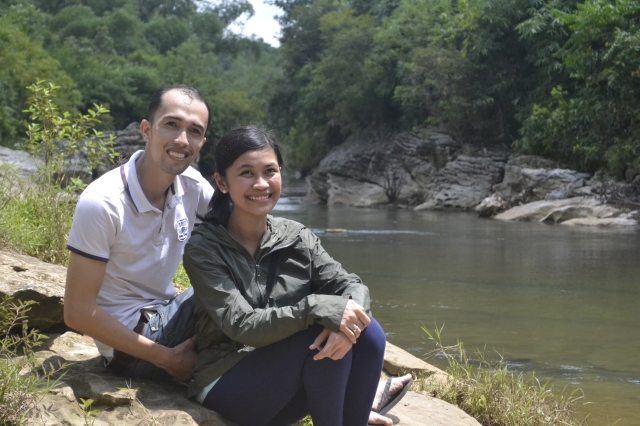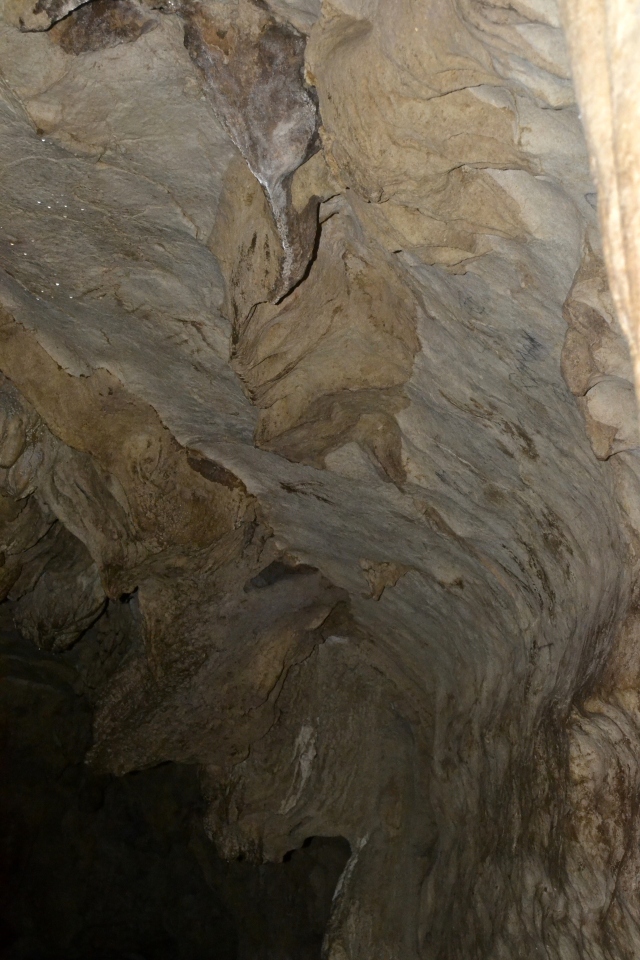SEPT 2015 – The eight rays of the sun, as depicted in the Philippine flag, testify to the significant contribution of the province of Bulacan in the revolt against Spain in 1896. Indeed, Bulacan is one of the eight provinces that shed light towards the fight for independence, ending hundred years of slavery against the Spaniards.
A trip to Biak-na-Bato, in the town of San Miguel in Bulacan, takes you back to the era when Filipino Katipuneros took their plan of revolt against the Spanish conquerors. It offers a track back in history when the revolutionaries took refuge in hidden caves along the mountainous landscape of San Miguel to cure wounded revolutionaries, gather armors and hold secret meetings. To my mind this is our own version of the Cu Chi Tunnels of Vietnam that Cong Viets used to fight war against the American fleet.
HOW TO GET TO BIAK-NA-BATO VIA COMMUTE
Ride an ES Transport Bus Bound to San Miguel and alight at St. Paul School in San Miguel. ES Transport Bus Terminal is located in Cubao Quezon City. Bus travel from Cubao to San Miguel can take up 3 hours. In front of St. Paul is tricycle terminal, a tricycle that can load up 3-5 people can take you to the entrance of Biak-na-Bato for Php150 pesos per trip. Don’t worry for your ride on your travel back to town as the guides will surely offer you their transpo service at parity pricing.
Upon arrival at Biak-na-Bato, a tour guide will approach you should you want to do spelunking through the several caves around Biak-na-Bato while the guide tells you the role each one played in history. Entrance to the Biak-na-bato is affordably at Php30 for adults and Php20 for students. A visit to Aguinaldo Cave and Bat Cave would cost Php300 pesos. Should you want to explore the slightly farther but equally historical cave system comprising of the Hospital Cave, Artillery, Ambush Cave and Tanggapan you have to pay an additional Php500 for the tour guide. Our group chose to explore both route despite arriving at Biak na Bato almost around 11:30am.
TIP: As there is only one carinderia once you alight at St. Paul, it will be better if you take your own packed lunch. There are available picnic tables around the park.
The group rode a tricycle going to the jump-off point of the trek towards Hospital Cave. The trek going to each cave is breezy, comprised mostly of flat terrain passing by scenic rice paddies, small houses often in isolation and surrounded by view of the distant mountain ranges.
The interior of the caves often has slippery floor so make sure you got your sturdy rubber shoes or trekking sandals, ready for stepping on mud.
HOSPITAL CAVE
After a short trek, Kuya Abet, our tour guide, suddenly stopped in the middle of the grassy path to introduce us to the entrance of Hospital Cave, a few steps from where we were standing. No wonder the Spaniards would not easily notice such a place.
We reached the entrance to the Hospital Cave, where Katipuneros brought their wounded comrades for treatment and remedies.
Inside the Hospital Cave, the floor is perfectly flat, which makes it ideal for nursing wounded revolutionaries.
Amazingly, in the middle of the cave, is a purely white stalagmite formation that seemed to sparkle in the midst of the darkness once we focused our flashlight on it, like a gem being displayed as the highly regarded centerpiece of a museum.
Since stalactites and stalagmites are considered delicate rock formations that once touched by people have that tendency to stop their growth, keeping it intact despite several tourists visiting that place is truly commendable.
IMBAKAN CAVE OR ARTILLERY CAVE
Shortly after walking around bamboos, trees and shrubs, we have entered the Artillery Cave, also known as the Imbakan Cave, where Katipuneros hid collected firearms and other revolutionary supplies.
The entrance to the cave seemed like an abyss of darkness.
The exit to the cave can be too narrow that you have to walk sideways to pass through it.
TANGGAPAN CAVE
After a short walk passing a shrubby path, we reached an open cave tagged as the Tanggapan Cave.
As the name implies, this cave served as a reception area, where they used to accept and orient new recruits of the Katipunan before they were eventually immersed to the operation and introduced to the secret caves of Biak-na-Bato. This was said to be where the famous tradition of blood compact as part of the initiation to Katipunan ‘newbies’, an act that somehow signified the way they bravely fought for the nation, with life and blood.
AMBUSH CAVE
After walking passed Tanggapan Cave, we continued the trek passing by a refreshing sight of a calm river cum stream before reaching the mouth of our last, a relatively most difficult to traverse cave, the Ambush Cave.
Ambush Cave served as a trap to trick Spaniards towards a planned ambush. Some Katipuneros would let themselves be chased by the Spaniards while they led them towards the cave. Since the cave was completely dark, some Katipuneros would be on standby inside while they waited for the enemies’ footsteps specifically the sound of their boots, before attacking them. When inside the cave though, one couldn’t help but think how many had died inside – creepy thoughts.
The cave has a narrow opening that you literally have to bend your knees and do the duck walk. You don’t have to entirely do the duck walk throughout the cave but you have to somehow bend your body as the cave ceiling is really low and uneven and sometimes…
BAT CAVE
After the series of caves, we took the trike back to the park entrance to explore the other side of the park.
We walked through a cemented, newly renovated pathwalk leading towards the Bat Cave. Bat Cave or the Bahay Paniki seems to be an open cave but the path can be too rocky and slippery so we dare not pursue it.
To conclude the trip, we had a refreshing walk crossing a river and enjoying a relaxing plunge by the man-made waterfalls.
We passed by what they call as Aguinaldo Cave, where General Emilio Aguinaldo (Yes, the first president of the Philippine Republic) took temporary office and held secret meetings. The cave is covered by freezer-cold fresh spring water that only brave souls would dare swim at.
The cave is situated beside the river and there is a portion that the spring water and the warmer river water meet.
Apart from the historical significance, it is good to note that the park has been given special attention by the government lately as it is currently being developed, with construction of several comfort rooms for visitors and renovation of the pathways. With a nation with a history as rich as ours, it can be through these caves can we physically feel how the country’s independence was fought by several generations before us – and hope at the end of this activity you’ll also realize that it was not an easy fight for freedom.
With this, I have high hopes that the government will realize the importance and take actions in preserving and promoting the history of Biak-na-Bato to the young generation simply because we take pride in our history as a nation.
*All photos are credited to Cath dela Roca.































